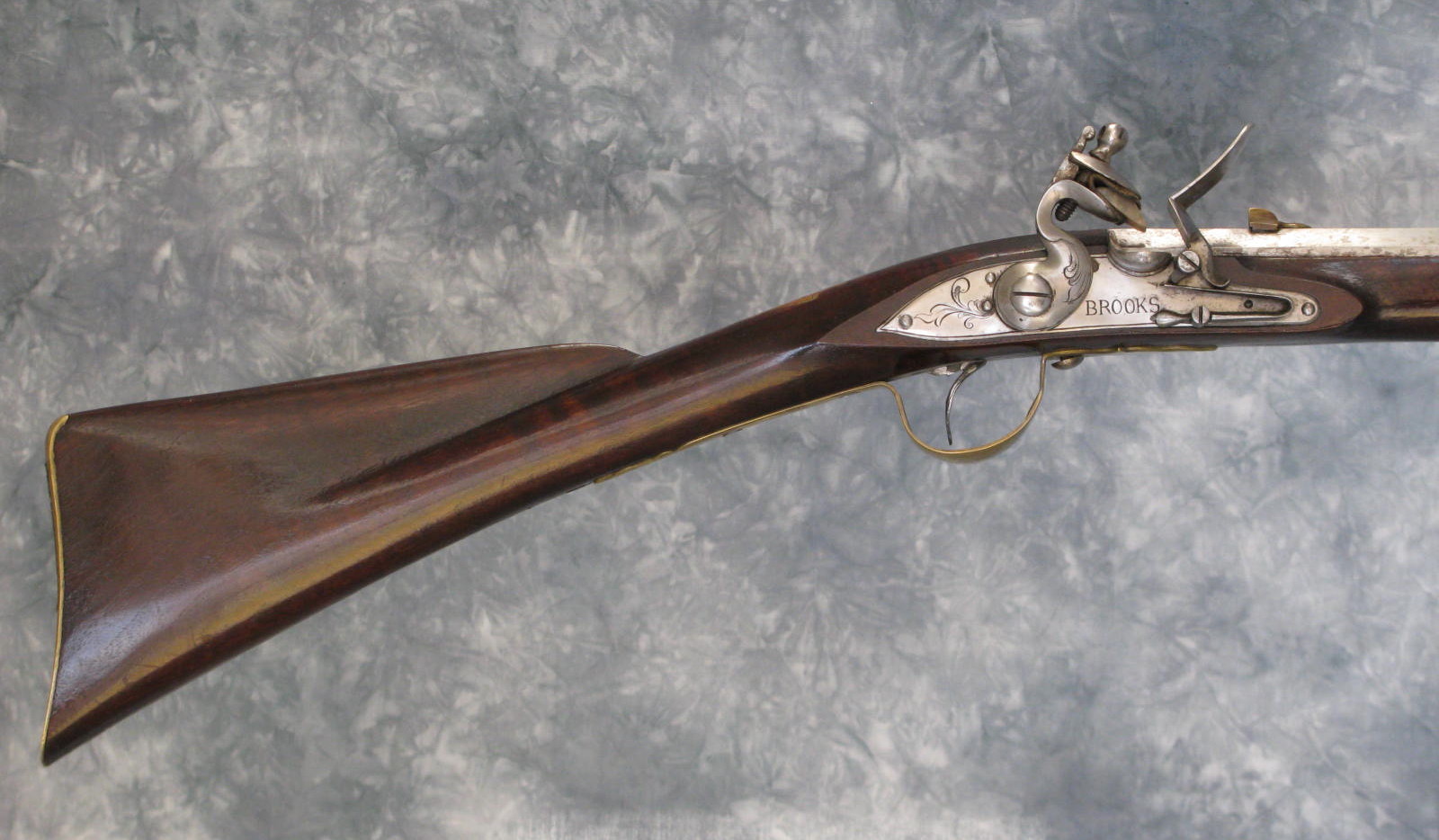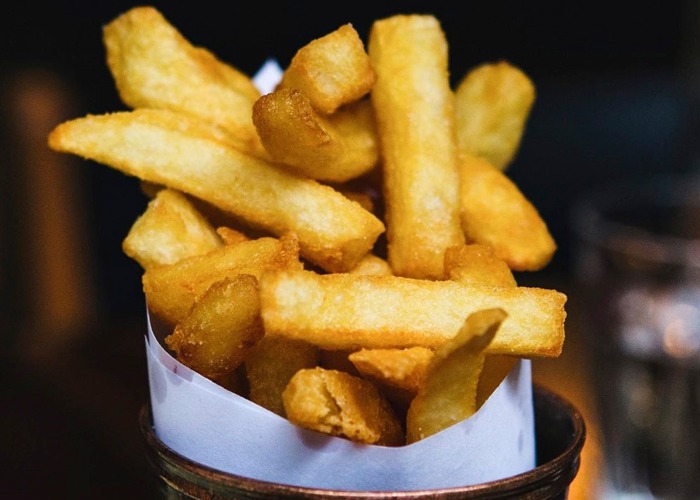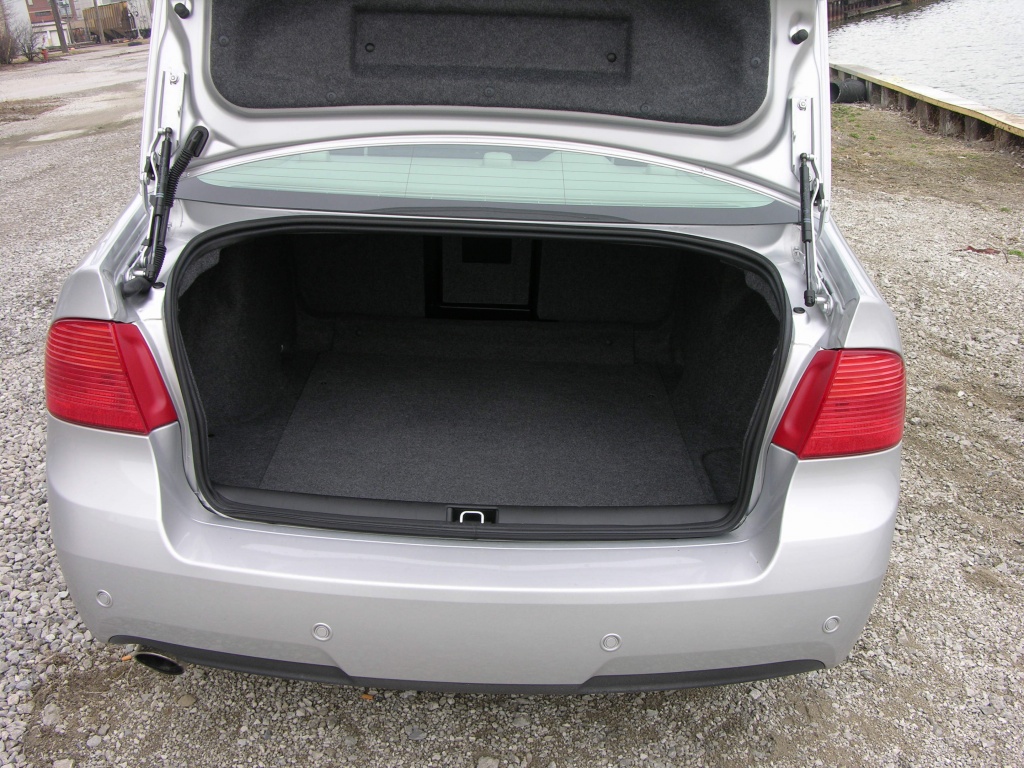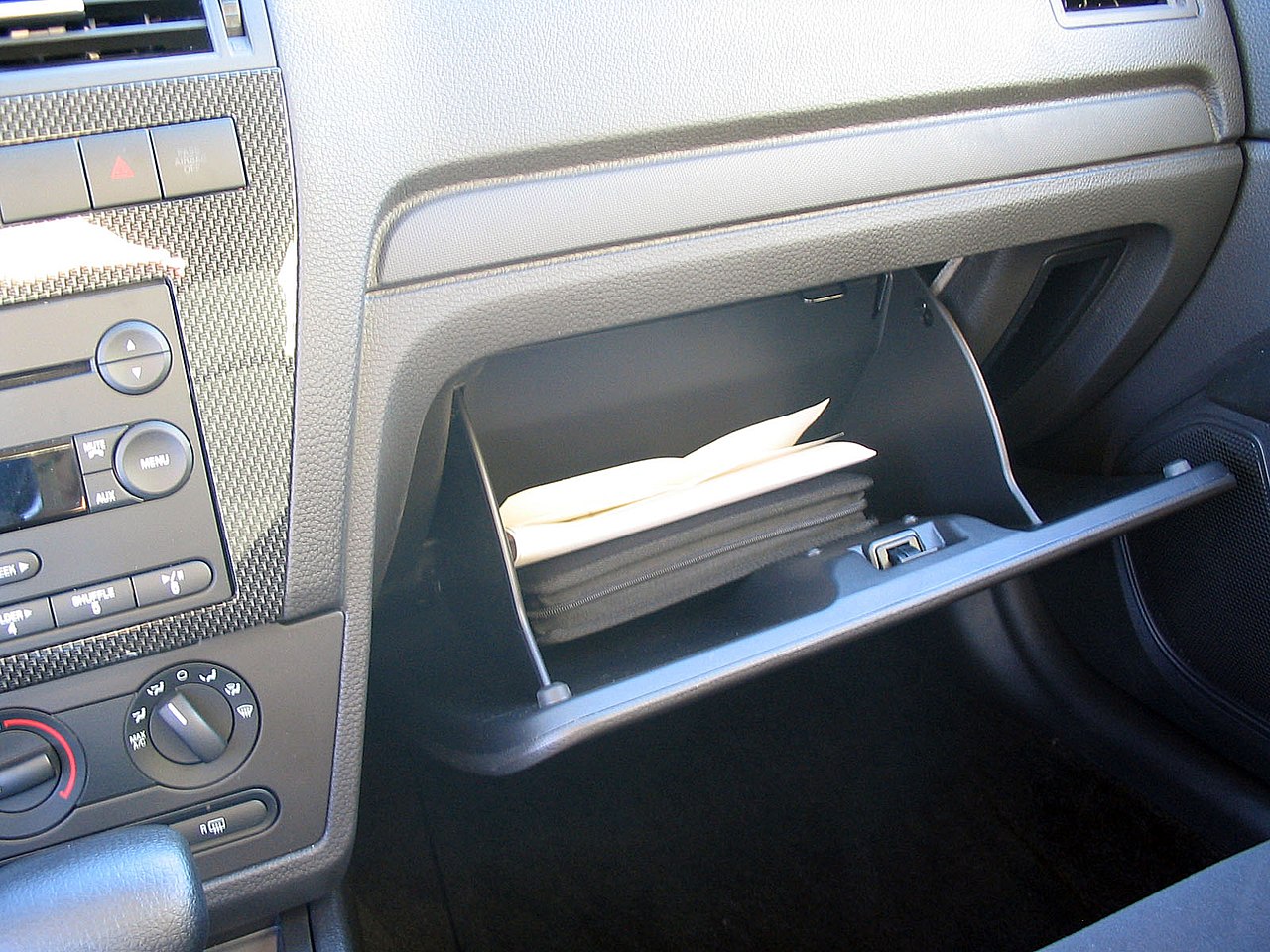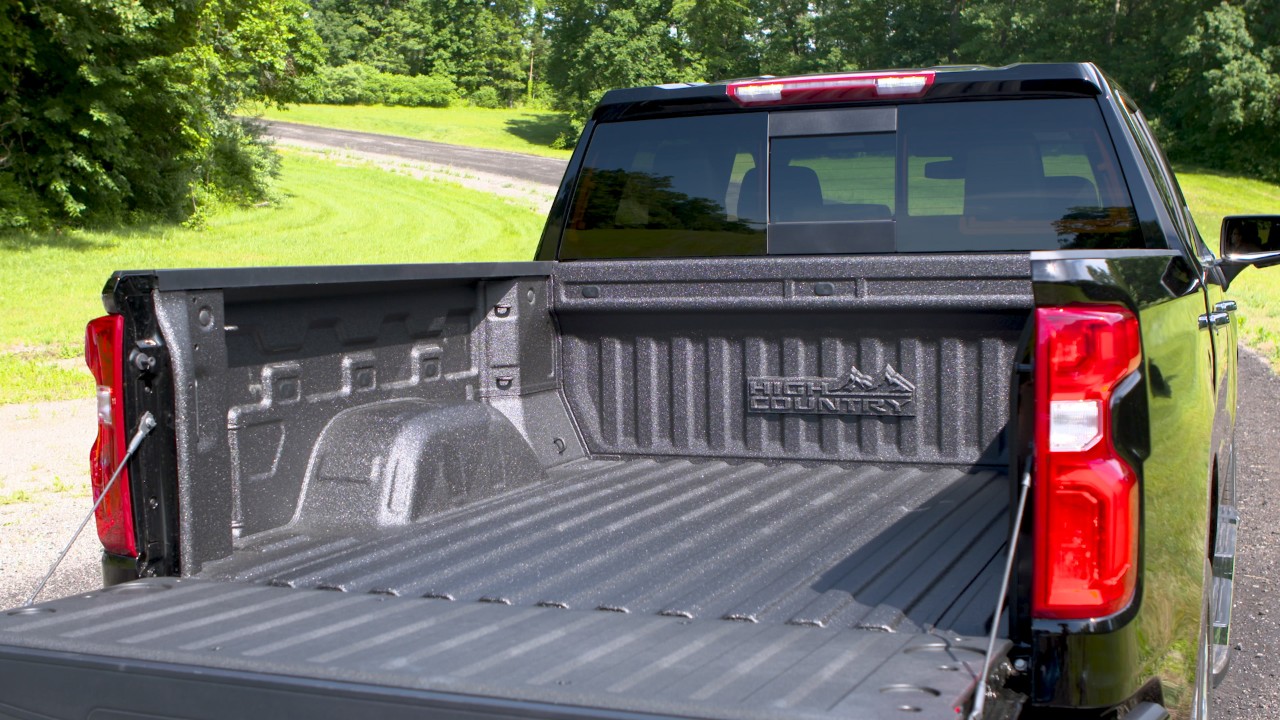...Sorry for hijacking your thread...when you guys started talking about early English & French guns I couldn't help myself!...
Toklo Etee and
Bob McBride,
Now that this thread has been hijacked, let's turn it into a show of Jack Brooks Type G's.
This is one of Jack's early guns. It has one of his hand made locks that he cast from the original. This gun has seen a lot of use by an active re-enactor back in the 1990's and 2000's. It's acquiring a natural patina on what was originally a bright barrel and lock.
Jack stocked this gun in English walnut. He probably put a little stain on it and then his standard homemade varnish. This one he finished plain--no paint or vines.
The original owner changed out the trigger, probably to give it an easier trigger pull. He hand forged the new trigger, and it looks like something a frontier gunsmith would make. He may have put on additional coats of oil or varnish, possibly to add more protection for the wood where he had worn off the original finish.
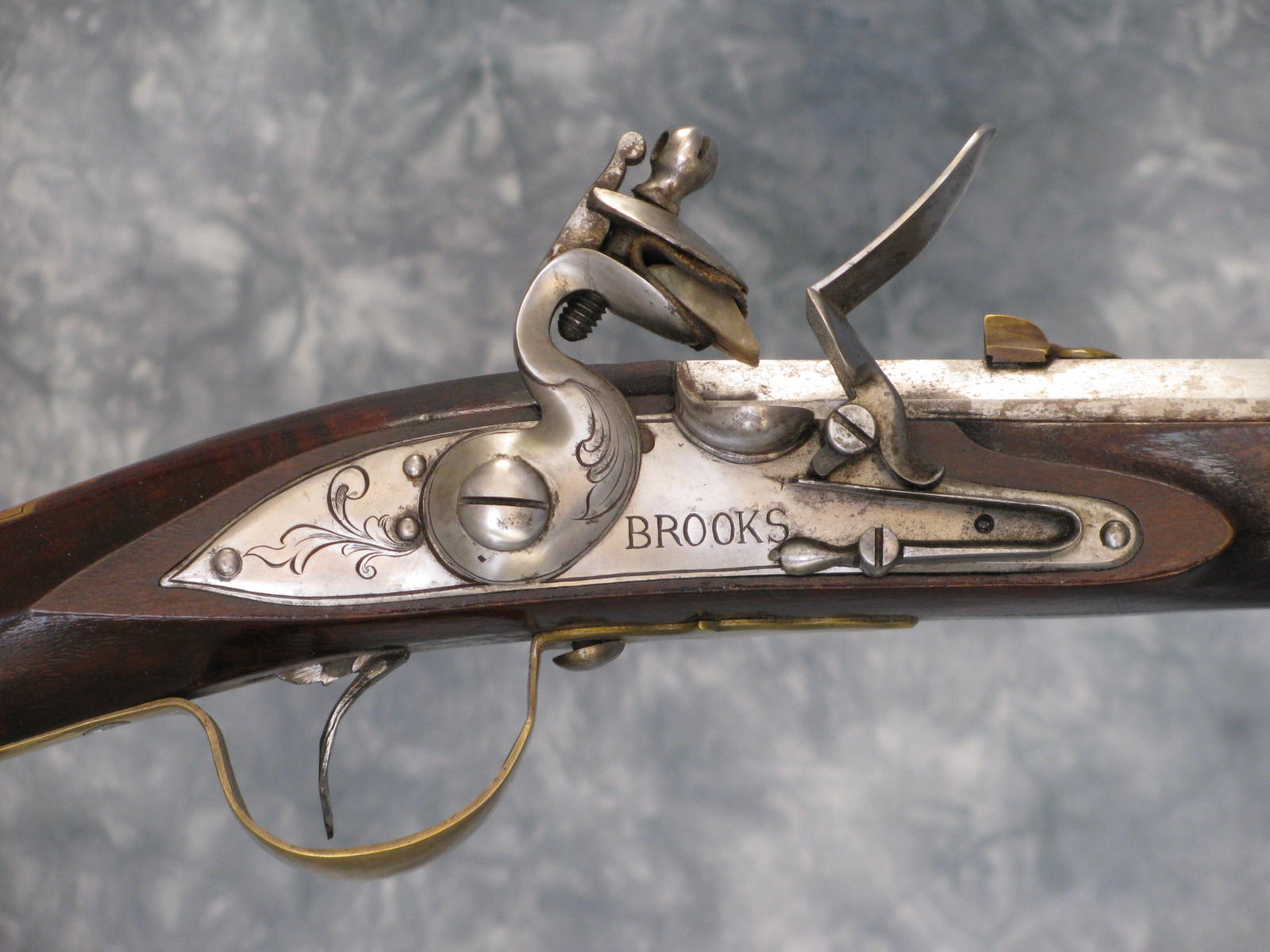
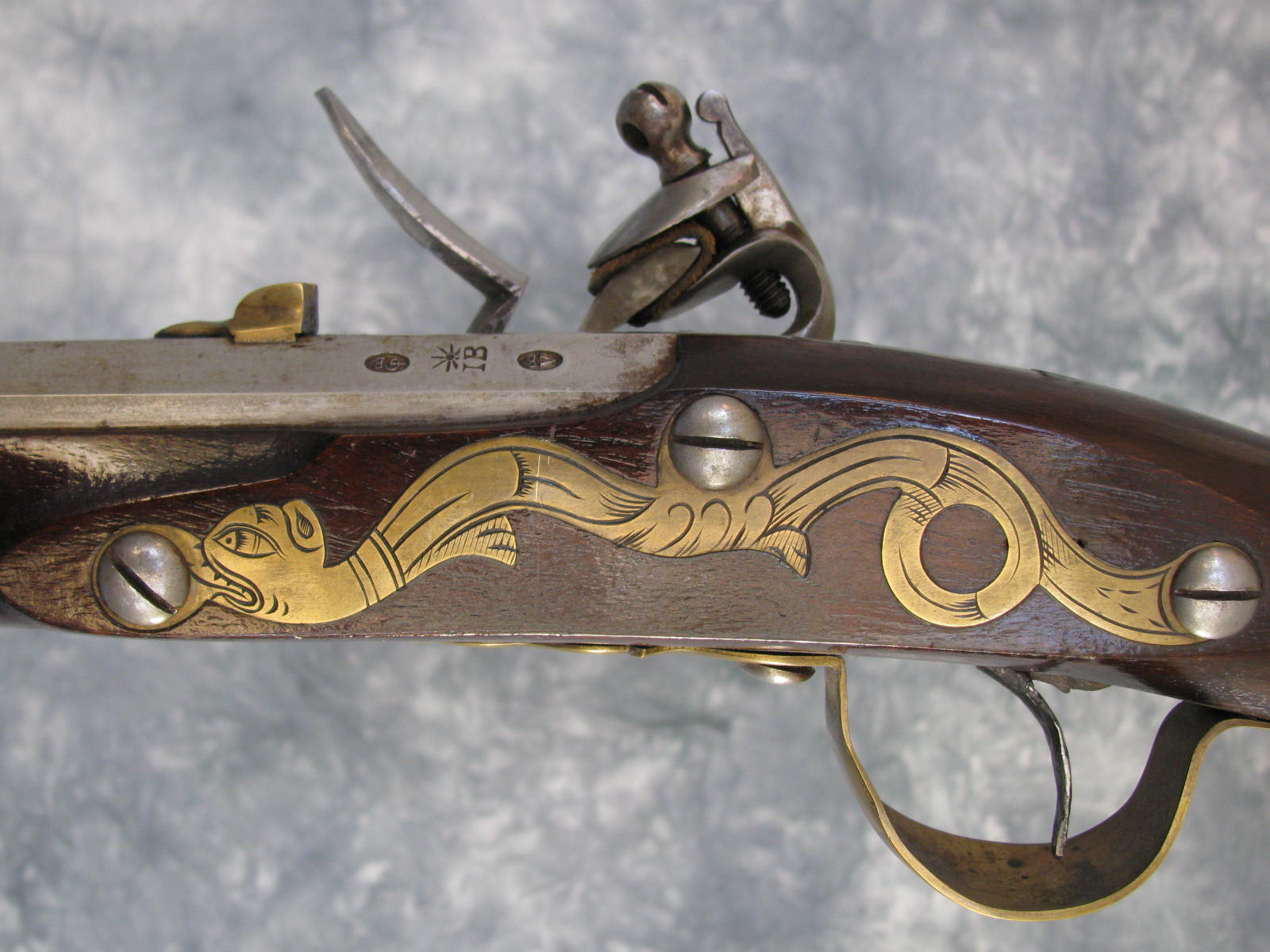
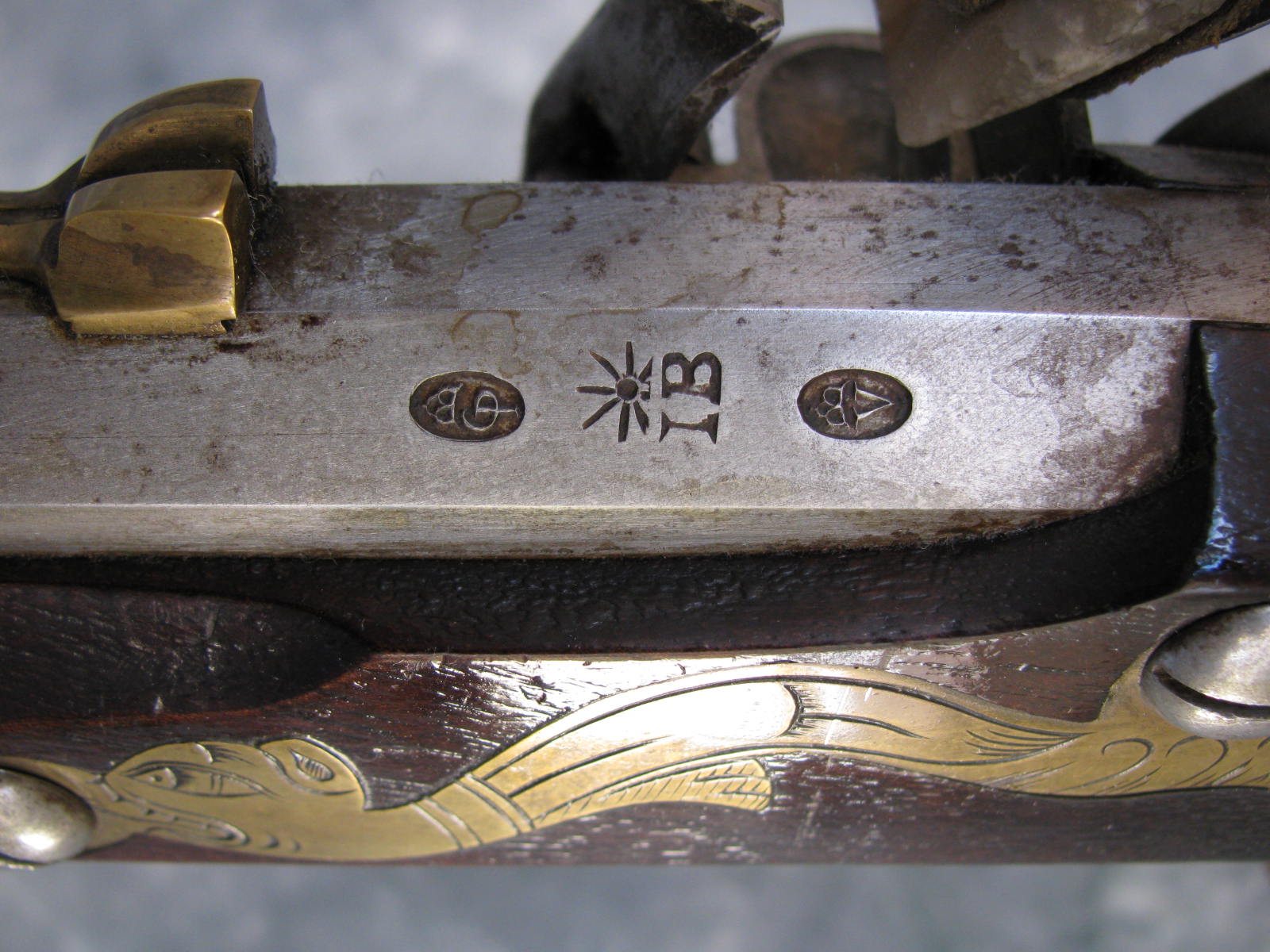
Jack's Type G is a copy of an original Richard Wilson gun that was in Jim Dresslar's collection. Back in the 1980's and early 90's, they held some Western Kentucky Rifle Rendezvous shows (kind of a Western KRA) out here in the Rocky Mountain Region. The show was held in various locations such as Denver, the Museum of the Fur Trade in Chadron, NE, Bent's Fort in SE Colorado, Jim Gordon's dude ranch near Baily, CO, and private facilities near Salida, CO to name a few. The show often had a Western theme and some focused on trade guns and trade rifles. Dresslar had his Wilson Type G at one of these shows and allowed Brooks to take extensive measurements and make rubber molds of the lock and other parts with plans to make a copy. The plans started to take shape in July of 1991 when Jack proposed building one for one of his clients. Due to a personal tragedy and delays in getting a custom barrel made to the original dimensions, Jack didn't finish his first Type G until July 1992.
When Jack was planning his Type G, the only published information on them was in T.M. Hamilton's
Colonial Frontier Guns. Interestingly, as Jack was planning his copy and lining up a client for the first one, Lee Burke was working on his paper on the Type G, "
18th Century English Trade Guns in the South, or The Carolina Gun and It’s Time and Place in History", that was presented at the Fall, 1991 meeting of the American Society of Arms Collectors. You can see a copy of Burke's paper
here. (A note about Burke's paper: he makes reference to a Bumford gun and includes pictures where he compares his TR Type G to the Bumford gun. This is a different Bumford gun than the one in the Colonial Williamsburg collection. I had them confused as one and the same until I more closely read his description of it and looked at the photos.)
When his first Type G was finished, Jack had it professionally photographed for a article that his friend Bob Lienemann was writing about the Type G and Jack's copy of the gun. Lienemann's article was published in the October 1994 issue of
Muzzle Blasts. A copy of Lienemann's article can be found on Jack Brooks
website or on the NMLRA archived issues of the magazine if you are a member.
Lee Burke, Jack Brooks, and Bob Lienemann spurred the current interest in the Type G trade gun with their articles and Jack's copy of an original.
You used a singular possessive of the word "fowler." The apostrophe plus "s" denotes possession by the singular subject. In other words, it was cut off: "fowler's... what? fowler's fowler? fowler's hat?" I'm dying to know!
If we're being super precise, the whole title of this post would be a bit confusing. "Who used fowlers?" In a literal sense, we're asking, "who used people who hunt fowl." We should be asking, "who used fowling pieces." There. It's out of my system.









